Blog
Cedar House Life Change Center

The holiday season can be joyful but also challenging. For many people, the holidays are a time of togetherness and celebration. But for those in recovery from substance use, this season can bring a mix of emotions -- joy and gratitude, but also stress, temptation, and pressure. Family gatherings, social events, and memories of past holidays can test even the strongest commitment to sobriety. At Cedar House Life Change Center, we understand these challenges. Our mission is to help individuals and families build lasting recovery through treatment, education, and ongoing support. Here are a few practical ways to protect your sobriety and stay connected to hope this holiday season. 1. Plan Ahead for Triggers Before attending a party or event, think about what might challenge your recovery. Bring your own non-alcoholic drink, drive yourself so you can leave early if needed, and connect with your sponsor or peer network before you go. Preparation gives you confidence and control. 2. Stay Connected to Your Support System The holidays can feel isolating, especially if you’re making lifestyle changes. Reach out to supportive friends, family members, or recovery peers who understand your journey. Schedule a check-in or attend a support group before and after big events. Staying connected helps you stay grounded. 3. Prioritize Self-Care Take care of yourself, physically, emotionally, and spiritually. Maintain regular sleep, eat balanced meals, get outside, and make time for reflection or prayer. A calm and nourished mind is your strongest ally in maintaining sobriety. 4. Set Boundaries and Say “No” Without Guilt You don’t have to attend every event or explain your choices. Declining an invitation or leaving early doesn’t make you antisocial. It makes you strong. Your recovery is your priority, and real friends and loved ones will respect that. 5. Keep Recovery at the Center of the Season Stay consistent with meetings, counseling, or alumni groups. Cedar House offers aftercare support, relapse prevention programs, and peer connections that help clients stay engaged long after treatment. Recovery doesn’t stop after discharge. It’s a lifelong process of growth and renewal. You Don’t Have to Do This Alone If you or someone you love is struggling this holiday season, Cedar House Life Change Center is here to help. Our compassionate team provides evidence-based treatment, medical support, and recovery programs designed to meet each person’s unique needs. Reach out today to learn how we can help you or your loved one find peace, purpose, and sobriety this holiday season and beyond.
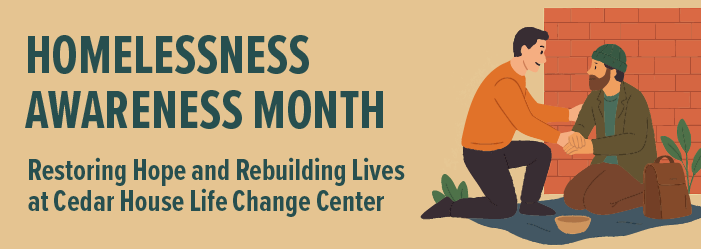
November is Homelessness Awareness Month, a time to shed light on one of the most urgent issues facing our communities. Every day, thousands of individuals and families across San Bernardino County struggle with the devastating cycle of homelessness, often intertwined with substance use and mental health challenges. At Cedar House Life Change Center, we believe that recovery and stability begin with compassion, connection, and comprehensive care. For more than five decades, Cedar House has provided a safe haven for those seeking to overcome addiction and rebuild their lives. Many of the people we serve come to us after experiencing homelessness or unstable housing—circumstances that make recovery even more challenging. Through our evidence-based treatment programs, sober housing resources, and continuum of care, we help individuals find the structure, support, and self-worth needed to thrive. Our services address more than substance use. We provide mental health counseling, case management, and referrals to permanent housing, recognizing that recovery is not complete until every person has a safe place to call home. For many, Cedar House becomes the bridge from crisis to stability—where individuals rediscover hope, rebuild family connections, and prepare for lasting independence. This month, we invite our community to join us in raising awareness, reducing stigma, and supporting efforts to end homelessness. Whether through donations, volunteering, or spreading the word, every act of compassion brings us closer to a future where recovery and housing are accessible to all. At Cedar House, we know that healing happens one person—and one home—at a time.
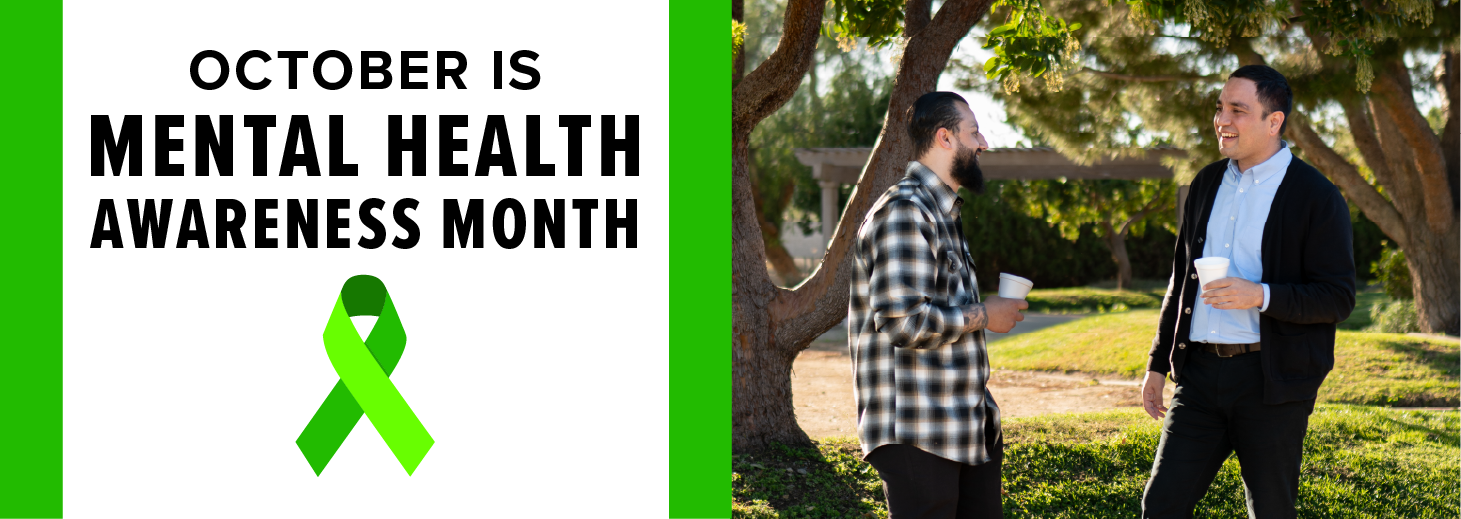
Each October, Mental Health Awareness Month reminds us that recovery and healing are possible for everyone. At Cedar House Life Change Center, we understand that mental health and substance use are deeply connected. Many people who struggle with addiction are also coping with conditions such as anxiety, depression, or trauma—and each affects the other. Treating both together is essential to lasting recovery. For more than 52 years, Cedar House has been helping individuals and families throughout the Inland Empire rebuild their lives through compassionate, evidence-based treatment. Our staff empowers people to overcome addiction and mental health challenges with respect, dignity, and hope. Tips for People Seeking Support If you or someone you love is struggling, here are a few ways to start your journey toward recovery: 1. Reach out for help early. You don’t need to wait for a crisis to ask for help. Early intervention can prevent harm and improve long-term success. 2. Get a professional assessment. At Cedar House, licensed clinicians assess each individual’s physical, mental, and emotional health to create a personalized plan. 3. Find community support. Recovery grows in connection. Peer support, counseling, and family engagement help build resilience and accountability. 4. Create stability. Safe housing, structured routines, and supportive care environments help lay the foundation for recovery. 5. Commit to ongoing care. Recovery doesn’t end after treatment—it continues through outpatient services, counseling, and ongoing connection to support systems. How Cedar House Life Change Center Can Help Cedar House offers a continuum of care designed to meet people wherever they are in their recovery journey: Withdrawal Management and Residential Treatment — Structured programs for men and women addressing both substance use and co-occurring mental health disorders. Maple House Perinatal Program — Family-centered services for mothers and children to recover and thrive together. Outpatient and Aftercare Programs — Continuing care, therapy, and relapse-prevention strategies for lasting stability. Family Support — Counseling and education to strengthen families and rebuild relationships. Our integrated treatment model ensures that every client receives comprehensive, coordinated care. You Are Not Alone This Mental Health Awareness Month, Cedar House encourages everyone to talk openly about mental health and seek support when needed. Recovery is not a solitary journey—it’s a shared path toward healing, strength, and renewal. If you or someone you love is struggling with substance use or co-occurring mental health issues, contact Cedar House Life Change Center today. Together, we can help you find hope, healing, and a fresh start.
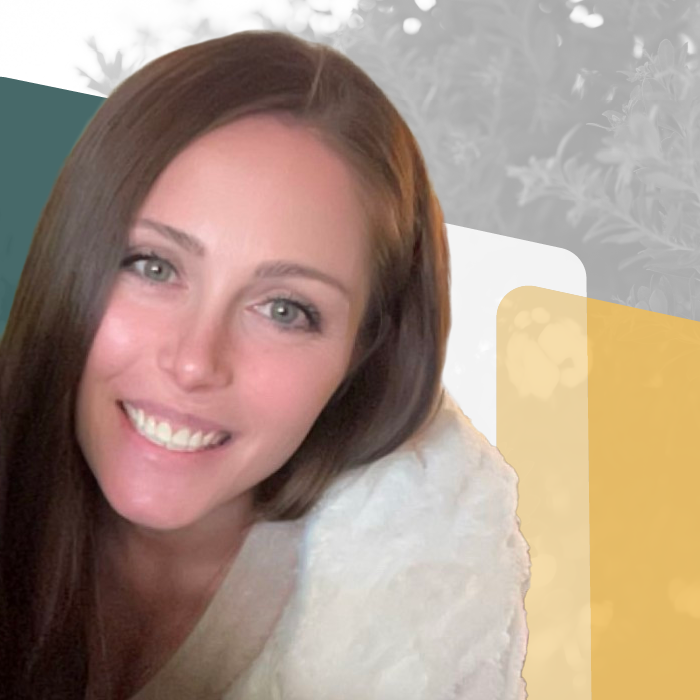
When Nikki first realized alcohol was destroying her life, it was 2012 — the year she nearly lost it entirely. On May 12, 2012, she made the decision to stop drinking. That same day, her body collapsed under the weight of years of alcohol abuse. She began bleeding heavily, vomiting stomach acid, and was rushed to the hospital. Her heart stopped. Medical staff performed CPR for 6 minutes and 38 seconds before bringing her back. Nikki survived, but her road ahead was long. She spent two months in the hospital, then entered Alcoholics Anonymous and worked the program. She stayed sober for two years — but like so many battling addiction, she relapsed. Over the years, her drinking escalated to 4–6 liters of vodka a week, often leading to hallucinations, psychosis, and dangerous detox episodes. Legal troubles, family struggles, and her son’s complex medical needs weighed heavily on her. Her breaking point came after her young son — who had cerebral palsy — faced a series of health crises. Despite staying sober for two years, the mounting stress and heartbreak eventually pushed her back into the cycle of drinking. Nikki tried multiple recovery programs, but medical complications and relapses kept pulling her back down. She knew alcohol was destroying her, but the pull was relentless. Then came Cedar House. Nikki says the outpatient program there changed everything. It gave her structure, accountability, and—most importantly—nonjudgmental support. Even during relapse, she knew Cedar House would welcome her back with compassion and encouragement. While in treatment, Nikki endured one of the most devastating moments of her life — the loss of her son in November 2022. In her grief, she had the tools and the people to help. She leaned on therapy, grief counseling, church, her sponsor, and the fellowship of AA. She refused to give up. With encouragement from her Cedar House counselor, Nikki pursued a lifelong dream: becoming a psychiatric technician. She enrolled at Mt. San Antonio College and not only completed the program but graduated valedictorian in June 2025. She is now preparing for her state board exams and continuing her personal growth, sobriety, and service to others. Nikki knows that recovery is a lifelong process. “When you’re sick and tired of being sick and tired, you have to get the right tools in place,” she says. “The people at Cedar House believed in me, even when I couldn’t believe in myself. They gave me a safe place to come back to—without judgment—every single time.” Today, Nikki is living proof that with the right support, a person can come back from even the darkest moments and build a successful life.

When Steven was in his final days of treatment at Cedar House, he took time to write about his experience and share his story with his group. This is his heartfelt reflection in his own words: My name is Steven, and I am a recovering drug addict. Throughout my life I have used a variety of drugs from marijuana, cocaine, meth, and heroin to fentanyl. There would be times when I would hear people share and say that they are just like me. But I am not going to do that today, because I have no idea of what your stories are. What I would like to do is share a little bit of my story and what I have been through, and maybe you can relate to it. In my story, I took a path with so much pain and adversity. I would hide the pain from everyone. At a very young age, I was molested. This started my journey of PTSD and drug addiction. I would hide and isolate from people because I was terribly afraid of what people would think of me. I felt ashamed for what had happened to me. So, when my sister offered me drugs at a young age, I did them with her, and I felt a sense of relief. It would numb the pain and embarrassment that I felt from what had happened. My self-pity drove me into doing more and more drugs. I would blame myself for what that person did to me. I was so angry that I had no control over what had happened. I was just a child. I bottled up my feelings and buried them deep down inside. It would eat at me every day -- day in and day out. Growing up, the pain would lurk its ugly head. The worst it ever got was when I was alone in the dark. I felt so much fear growing up. This is something I had to overcome and learn from. Life is so interesting. It makes us walk through different paths of choices. We are unable to see the destruction and pain we are about to go through. These challenges mold us and makes us the people we are today. There are two experiences that I would like to share with you today. The first is my divorce and the second is the death of my sister. These events steered me into a life of addiction, and I hope my message can help change at least one life. I know that I felt exhausted from the life of chasing -- chasing for a cure that would never appear. My divorce was not something simple. It ate at me every day. I got there through a series of issues that happened. I was fired from my job. I had to sell my home that I bought for my now ex-wife and my unborn son. I sat and cried in my son's room alone because I felt like a failure. During all of this, I was hiding my addiction until I couldn't handle it anymore. My wife found out and kicked me out of our apartment. I felt so angry, I felt like she threw me out like trash. I was acting like a child, instead of dealing with it like I should have. I was so hard on myself. I felt like I was losing control, but the lesson to this is to allow things to go. I needed to surrender to this. I also learned that I needed to ask for help instead of hiding from the issues. This takes me to my next lesson -- when my sister passed. When my sister passed away, it was seven days of hell. She passed due to multiple abscesses, one on each arm and one in her stomach. I stayed up for seven days changing her bedding because she would either defecate or urinate on herself. I cleaned her and watched her as she tried to sleep but couldn't because of the pain. I tried to plead with her to let me call 911 because at the time, I had no idea what was happening. She would say, "No, I want to wait for mom to come home." Our mother was away on vacation visiting family out of the country and would return in seven days. I can still hear her cries of agony, day after day. She made me promise that I wouldn't call 911 until our mother returned. So, I kept that promise and kept her secret. I never knew what an abscess was and how serious it would become. After the 7 days were up, our mother returned home. The next morning, we called 911. My mother was frantic and didn't know what to do. Even in agony my sister lied to the EMTs; she said nothing about her use. My sister wanted our mother to not find out her secret. I couldn't stay quiet any longer, I told the EMTs everything, but it was too late. My sister passed away after two days. The doctors tried to take the contaminated blood out of her system, but nothing they did helped. It was just too late. Prior to all of this, I would plead with my family to help my sister. They just did not want to believe that there was a problem. During her funeral, everyone was upset and saying they could have done this or that. I was so disgusted with my family that I didn't attend. I wanted to remember my sister by the good times and not the last seven days of her life. I felt so much guilt over what had happened. I had to deal with the pain. I had to let go of the resentment, anger, fear, sadness, judgement, secrets, hurt, blame, and guilt. I had to put my faith in something more. I had to put my faith in a higher power. So, I had to make some changes in my life. I started making commitments. Making a commitment every day to stay sober requires faith. If I make the necessary changes, things will get better. I need to accept that some choices and things are out of my control, and I need to be okay with that. I will trust myself in making the changes that are needed and have pride in myself. My selfishness will be in my sobriety and not in negative actions towards people. Faith can be anything I desire it to be. Cedar House has taught me to take responsibility in myself, my actions, my behavior and, most importantly, in my addiction. Throughout this journey, I have learned to love myself again, to work on my character defects, and to gain so many new brothers in sobriety. In life, so many people make mistakes, and you can choose to get up and make the necessary changes or get beat down. And I was beat down over and over again. I walked into rehab beaten, bruised, and broken. It was challenging, but over time the bruises healed and the bones that were broken started to heal as well. I am grateful to overcome the mountain of rehabilitation. I didn't do this by myself. It took a brotherhood of men who were broken and beaten, too. We all faced our fears in our own time. It also took the patience and care of our counselors. They gave us guidance and advice that we desperately needed. They were the lighthouse to our battered ships. Without them we wouldn't know which way to steer. To my brothers in the war for sobriety, I say, my love goes out to you, to the ones who are healing, and to the ones who still need help. To the staff of Cedar House, no amount of gratitude will express how much I am thankful for. You revived my broken soul. I will end with one final thing to my brothers, you're not alone.
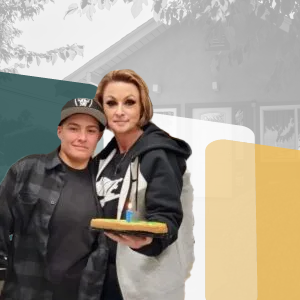
As a teenager, Sabrina overcame the challenges of bouncing around numerous foster and group homes, frequently being rejected for her sexuality. She emancipated from the system and prepared herself to start school. The company she kept, unfortunately, led her down a dark path instead. The young woman with whom Sabrina had a relationship since the age of 15 was a drug addict. She used meth on a regular basis and tried to convince Sabrina to join her. Sabrina wasn’t interested. As a matter of fact, she argued with her girlfriend time and again begging her not to use. But ultimately, there came a time when Sabrina lost that argument and was persuaded to try using meth herself. She was living in a group home in Pasadena when it happened. Sabrina said, “I can’t count how many group homes and foster homes I had lived in.” Her girlfriend and roommate surprised her by using meth in her room while she was in the shower. She said, “I was scared of meth. I wouldn’t touch it.” When she entered the room and saw that they were using, they fought for a long time before her girlfriend finally said, “If you love me, you’ll try it.” And that was the final straw. Shortly after that first experience with meth, Sabrina and her girlfriend, both addicted, were kicked out of the group home. She was homeless, hadn’t started school and was barely getting by with cash aid and food stamps. Even at times when Sabrina wasn’t interested in getting high, her girlfriend would manipulate her into using. Sabrina lived under a bridge on a binge in Pomona for three years. During that time, she met up with an old boyfriend which led to an unexpected pregnancy. She said, “I didn’t even know I was pregnant until I went into labor. I was so high and so skinny.” The paramedics immediately took the baby girl away, but that was a turning point for Sabrina. She said, “I fought tooth and nail to get her back.” Her social worker asked if she would be willing to go to rehab in order to gain custody of the baby, and Sabrina wholeheartedly agreed. She called every day to inquire about getting into a residential program. In March 2018, she was admitted to the Maple House program. She simply wasn’t ready. During her stay at Maple House, she was rude, disobedient and angry. By May she had made very little progress, and her behavior led to her dismissal from the program. A few months later, she entered another rehab program where she served as kitchen coordinator and began to make some progress toward sobriety. She got in trouble there for breaking rules and was dismissed from that program as well. Next, she tried an outpatient program and continued staying clean and sober. She moved into a sober living facility. When one of her drug tests came out questionable, she had to leave that home, too. She said, “I ended up losing my home and losing faith again. I went back to the streets in Pomona.” On February 21, 2019, her social worker managed to get her back into the treatment program at Maple House. This time she was ready. She loved her counselors and learned so much from them. Sabrina said, “They really helped me through it. Rosanna opened my mind. Rita taught me to cook and gave great advice. They were always there to listen, and they motivated me to do good. I could talk to them instead of getting angry.” At Maple House, Sabrina learned the importance of surrounding herself with kind-hearted people who not only care about her, but also continuously build her up to be the woman she was born to be. She has been sober for nearly two years and is the proud mother of two young girls.
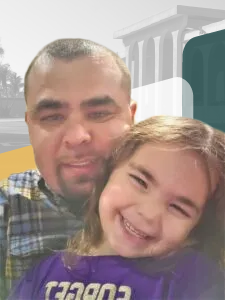
Eduardo checked the gas gauge of his green Honda and realized he was almost empty. With no cash, no home, no job, and no family, he knew where he needed to go. And he had JUST ENOUGH gas in his tank to get there. From the age of sixteen, Eduardo had been abusing drugs and alcohol. In the summer of 2005, he began hanging around a rough crowd and started smoking cigarettes, then weed, then meth. Rock bottom came three years ago when he and his fiancé moved to Las Vegas. “I started stealing and lying; spending all my checks on gambling and drugs. I lost my fiancé; I lost my brother’s, my sister’s and my parents’ trust.” Eduardo ended up living on the streets with only his car and his luggage. That’s when his brother told him about Cedar House, and Eduardo realized he had just enough gas to get there. He arrived at 10 p.m. on June 27, 2017. He said, “I was tired. I just wanted to stop and relax. I didn’t want a pipe in my mouth.” The next morning, he learned that Cedar House had a waiting list to be admitted into the residential program, but Eduardo had no place to go. He stayed outside in his car waiting until a bed came available. He spent the next 45 days at Cedar House working on changing his life. Eduardo said, “At first, I didn’t like going to group (meetings), but eventually I thought to myself, ‘I’m setting myself up for failure.’ That’s when I started doing the work, especially learning about my triggers.” Between learning certain types of music that triggered his addiction to meeting individuals who would significantly impact his life, the Cedar House experience made an indelible mark on Eduardo. He said, “When you’re trying to recover, you’re so vulnerable, but there were some amazing gentlemen that really helped me along.” One man in particular changed the course of Eduardo’s life in a way he never expected. He said, “I made the decision to leave (Cedar House) because I had reached the peak of my withdrawal. I had so much going through my mind and so many emotions going through me. If I left, I would have just gone straight back to doing the same things, and things would be a whole lot different right now. But Michael stopped me. He sat me down and had a powerful chat with me. He calmed me down and gave me the strength to continue the program. That man really cares about the people at Cedar House.” We couldn’t agree more. Michael Rodriguez is the Men’s Residential Coordinator at Cedar House and an EPIC Life Changer. We’re thankful to him for his compassion and persistence. And we’re thankful that Eduardo took his advice and persevered. After graduating from Cedar House, he went to work at his brother’s restaurant. Soon after, he reconnected with his fiancé and children in Las Vegas where he began working at a facility making plastic polymers for medical devices. It’s work that has been steady for him and his family even during these challenging months of the pandemic. Eduardo says he would not even consider doing drugs again now that he has made so many positive changes in his life. Thankfully, he had just enough gas in the tank and determination to continue with his treatment to change his life.

“What does Misty want?” That’s what Misty’s counselor asked as they worked through her addiction. With her judgement clouded by alcoholism, Misty struggled to pinpoint the answer. But over time, as she continued to work the program, she began to think clearly and discover the truth about what she wanted for her life. Raised in a dysfunctional family, Misty was a lonely child. She was sexually abused as a young girl and fell into depression. During high school, her family moved around frequently, and she found herself using alcohol to numb her feelings. In her 20s, she was deep into the party scene, using alcohol not only as a comfort but also as a method to feel bold and glamorous. Misty said, “It was a comfort. It was my medicine. It gave me courage to talk and be bolder. I was wittier and prettier when I drank.” But in retrospect, she said, “I didn’t realize how lonely I was.” When her boyfriend went through AA, she discerned that her family had suffered with addiction when she was growing up but thought it would never happen to her. As she dipped deeper into her own alcoholism, she would lose her inhibitions and “confuse all kinds of things with love.” Misty’s first husband was an abusive alcoholic. They had two children together, but Misty continued her drinking habits. She admits that she was a functioning alcoholic but didn’t realize it at the time. She was able to keep up with her job while drinking only after work and on weekends. She said, “It became an issue when I started having a drink before work. It became a necessity; my body needed it to keep going.” That daily alcohol abuse lasted 4-6 years and did a great deal of damage in her life. But she wasn’t thinking clearly. Even when she lost her job, Misty did not worry. She said, “Drinking takes your cares away and becomes your life.” She became homeless when the house she was living in was sold. She said, “I didn’t care as long as I had more alcohol.” She became a bartender and bounced from place to place for a place to sleep. Finally, she began to feel miserable when she was drinking. She said that she became a “mean drunk” and that suicide became a tempting alternative. After a couple of failed suicide attempts, she said, “I knew I had to quit but didn’t know how.” Fortunately, a doctor told her about the withdrawal management program at Cedar House. For six days, she detoxed from alcohol at Cedar House, followed by another 106 days in the residential program. During that time, she said, “I learned so much of myself and why we turn to alcohol. It wasn’t just three hots and a cot for me.” She learned that she had developed a mental disorder in connection with her alcohol abuse and worked with her counselors to heal. About the staff at Cedar House, Misty said she was most impressed with “their understanding of the disease; their knowledge; their experience; and their ability to pinpoint where I needed to start.” She felt safe at Cedar House and worried about “what’s going to happen when I get home.” After graduating from the program, she made an effort to rearrange her room and her life when she went home. When she found herself starting to get complacent, she went to a meeting her friend was leading. From then on, she has gone to a meeting every day. She said, “You can only take it one day at a time. You have to truly work the program. I am definitely a changed person.” Misty’s Case Manager Salena gave her a packet with information on feelings and emotions when she was at Cedar House that Misty continued to refer to for answers. She knew that the question: “what does Misty want?” was an important one that she needed to learn to answer by understanding her own feelings. She said, “Those questions are hard when you’ve been clouded.” She is proud to say that, a year later, by taking it one day at a time, she is a changed woman who is thinking clearly.
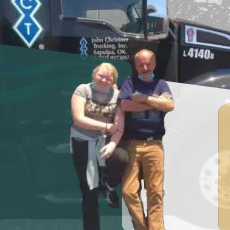
Robert’s story is unlike any other. With a dark, violent past, he struggled to see a future without drugs. But after 90 days at Cedar House in 2013, he has built a successful trucking business and is a proud father. Eight years ago, Robert’s life was out of control. He said, “The addiction was a struggle for me. I couldn’t get up in the morning without doing dope.” He was up to a quarter ounce of meth a day and couldn’t stop. His wife of 13 years was also an addict, and, according to Robert, their marriage was “nothing but violence and drugs.” When Robert caught her cheating, he said he “went over the edge.” He received a felony charge for threatening to kill her, but, because of a mental health diagnosis, he was released into the care of Cedar House through the STAR (Supervised Treatment After Release) program. He said, “They welcomed me like I was part of the family.” His experience at Cedar House truly changed him. He could finally see a way out of the dangerous lifestyle he had known for so long. Robert said, “They really cared for me. They showed me a different way of life that I really wanted.” After completing treatment, Robert began working at a casino but wanted to pursue a different career path. He called a trucking company that was hiring and got declined because they saw a felony on his record. He went straight to the courthouse to prove that it was not accurate, and they hired him a few hours later. His life was on track until he re-married a woman who unfortunately was an alcoholic, and this marriage was also a struggle. He said, “I wanted so many times to do drugs again but didn’t.” Finally, he made the decision to leave the relationship and move to Arizona. A few years later, he went to CRST Trucking School and earned his Class A license. Six months later, he bought his first truck. Robert is now an owner/operator of his own business. He bought a house in Laughlin, Nevada, and is in a new, healthy relationship. Through his earlier challenges, Robert lost custody of his daughter, but, after eight years, he has re-connected and hopes to re-gain custody soon. His 21-year-old son pitches for his university’s baseball team, and Robert couldn’t be prouder. He recently paid a visit to Cedar House to share his success and thank his former case manager, Michael Harang. He said, “I had been through life-long drugs before Cedar House. Michael was the best person. He lifted me up.”
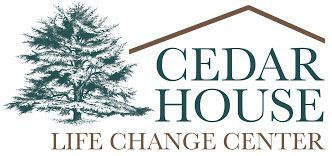

Share On: